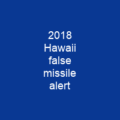Hawaii: A Unique Island State
Imagine a place where sun-kissed beaches meet lush, volcanic landscapes, and the past intertwines with the present in a vibrant tapestry of culture. Welcome to Hawaii, an island state that stands as a beacon of diversity and natural beauty within the United States.
The Geography of Hawaii
Hawaii is not just one island but 137 volcanic islands spread over 1,500 miles in the Pacific Ocean. With its eight main islands—Niʻihau, Kauaʻi, Oʻahu, Molokaʻi, Lānaʻi, Kahoʻolawe, Maui, and Hawaiʻi—the state offers a diverse range of landscapes from rugged mountains to pristine beaches.
Mauna Kea, the tallest mountain in the world when measured from its base on the ocean floor, stands at 13,796 feet above sea level. This giant volcano is not just a geographical marvel but also a symbol of Hawaii’s geological history and ongoing volcanic activity.
A Diverse Population
Hawaii’s population is a melting pot of cultures, with over two centuries of migration contributing to its unique blend. The state has the highest percentage of Asian Americans and multiracial Americans in the United States. Over 120,000 Hispanic and Latino Americans also call Hawaii home, making it a truly international community.
While the name ‘Hawaii’ is often used interchangeably with ‘the islands,’ there are only seven inhabited islands, each with its own distinct character and history. Niʻihau, for instance, is privately managed with restricted access, while Kahoʻolawe’s military history has left it largely uninhabited.
Historical Significance
The journey of Hawaii from a sovereign nation to a U.S. state is marked by significant events and transformations. The first human settlement dates back to around 900-1200 CE, with Polynesian explorers arriving from the Marquesas Islands or Society Islands. This early migration laid the foundation for a rich cultural heritage that continues to thrive today.
The arrival of British explorer James Cook in 1778 marked the beginning of European contact and subsequent changes. The overthrow of Queen Liliʻuokalani in 1893 by a group of Euro-American business leaders paved the way for Hawaii’s annexation as a U.S. territory, eventually becoming the 50th state on August 21, 1959.
Modern Challenges and Opportunities
Hawaii faces numerous challenges in balancing economic growth with environmental sustainability. The tourism industry, while bringing in significant revenue, also poses threats to local ecosystems through invasive species, plastic pollution, and chemical runoff. Additionally, the state’s high cost of living is a concern for many residents.
Despite these issues, Hawaii remains a beacon of hope and progress. Efforts are being made to address environmental concerns, promote renewable energy sources like solar power, and preserve cultural heritage through initiatives like the Papahānaumokuākea Marine National Monument.
Cultural Heritage
Hawaiian culture is deeply rooted in tradition and spirituality. The Hawaiian language, though spoken by a small percentage of the population, is making a comeback thanks to immersion schools and community efforts. Hawaiian mythology and customs continue to influence daily life, with festivals and celebrations honoring ancient traditions.
Conclusion
Hawaii stands as a testament to resilience and diversity, blending its rich history with modern challenges. From its volcanic landscapes to its cultural heritage, Hawaii offers a unique experience that captivates visitors and residents alike. As the state continues to evolve, it remains committed to preserving its unique identity while embracing progress.

You want to know more about Hawaii?
This page is based on the article Hawaii published in Wikipedia (retrieved on January 2, 2025) and was automatically summarized using artificial intelligence.







